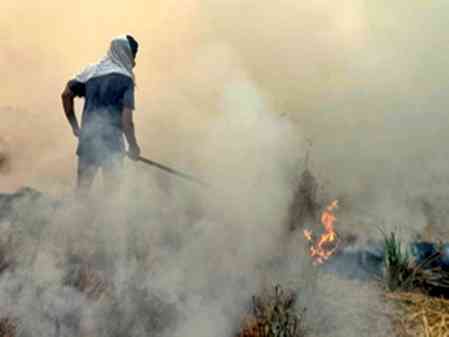Natural Calamities and Development Dilemma: Himachal Pradesh and Uttarakhand Grapple with Infrastructure Impact and Environmental Consequences
In the picturesque landscapes of Himachal Pradesh and Uttarakhand, a complex interplay of heavy rainfall, urban expansion, and the impact of infrastructure projects has thrust the local populace into a precarious situation. The region's beautiful terrain, dotted with lush hills and glistening rivers, has recently been plagued by natural calamities, leaving residents and policymakers grappling with uncertain forecasts. The convergence of factors such as cloud bursts, deforestation, and rapid development has sparked a disconcerting series of events, precipitating floods, landslides, and financial losses.

• Heavy Rainfall, Axing of Trees, and Urban Growth Pose Challenges
• Floods, Landslides, and Dam Releases Amplify Risk in the Region
• Call for Comprehensive Planning and Resilience Measures in the Face of Uncertain Future
In the picturesque landscapes of Himachal Pradesh and Uttarakhand, a complex interplay of heavy rainfall, urban expansion, and the impact of infrastructure projects has thrust the local populace into a precarious situation. The region's beautiful terrain, dotted with lush hills and glistening rivers, has recently been plagued by natural calamities, leaving residents and policymakers grappling with uncertain forecasts. The convergence of factors such as cloud bursts, deforestation, and rapid development has sparked a disconcerting series of events, precipitating floods, landslides, and financial losses.
CHALLENGES OF URBAN DEVELOPMENT AND ECOLOGICAL BALANCE
The rapid growth of infrastructure in the form of tunnels, national highways, multi-storey buildings, and hotels has brought both promise and peril. While these developments contribute to economic advancement, they have also contributed to environmental instability. Axing of trees, necessary for accommodating urban expansion, has had ecological repercussions that have far-reaching implications. As the lush green cover shrinks, the delicate balance of the ecosystem is disrupted, contributing to the vulnerability of the region.
DEVASTATION UNLEASHED: FLOODS, LANDSLIDES, AND DAM RELEASES
The natural disasters that have struck the region have wreaked havoc on multiple fronts. Flash floods resulting from cloud bursts have triggered landslides, impacting the picturesque Shimla and even vital national highways connecting hilly areas. Moreover, the swelling rivers - Ravi, Beas, Sutlej, Gagger, Yamuna, and Ganges - have unleashed their fury, inflicting financial losses of significant proportions as they traverse various states. The calamities have not confined their impact to hilly terrain; the plains have also borne the brunt, exacerbating the economic burden.
INFRASTRUCTURE'S ROLE IN VULNERABILITY
The crisis has brought to the forefront the intricate connection between development, vulnerability, and resilience. The release of floodwaters from dams like Bhakra, Pong, and Ranjit Sagar Dam, necessitated by torrential rains, has submerged low-lying areas. Similarly, the Hathnikund Barrage's discharge of Yamuna River water has disrupted life in the plains, even affecting the national capital, Delhi. The situation is mirrored in cities like Rishikesh, Haridwar, and Kanpur, where the Ganges has surged beyond the danger mark. These events underscore the urgency of comprehensive planning to address the mounting vulnerability arising from human intervention and natural forces.
A GLIMPSE INTO HISTORY: PATTERN OF FLOODS
The recurrence of floods in Punjab, separated by intervals of approximately 35 years, offers an insightful lens to perceive the cyclic nature of these calamities. This cyclic pattern, as seen in 2023's floods following the last occurrence 35 years ago, suggests a rhythm of heavy rains. The widening of roads, population increase, elevated hilltop construction, and tree removal have likely amplified this vulnerability. The resonance with previous instances prompts reflection on how development can inadvertently amplify the impact of natural disasters.
CHARTING A PATH FORWARD: POLICY AND PREPAREDNESS
In the aftermath of these calamities, there is a clarion call for a multi-pronged approach to address the complex challenges at hand. The Irrigation Department and Public Works Department (B&R) must be held accountable for sound construction practices and anticipatory measures. Infrastructure must be fortified with berms and spurs to shield against landslides and erosion. Dhussi Bandhs, designed to channelize and restrict floodwaters, must be optimized to protect low-lying areas.
TOWARD RESILIENCE AND UNCERTAINTY
While predicting natural calamities remains elusive, proactive planning is paramount. Reflecting on Germany's current struggles with heavy floods, the writing on the wall is clear - the effects of global warming cannot be ignored. Balancing development with environmental preservation, fostering resilience, and devising comprehensive disaster management policies hold the key to minimizing human suffering and economic setbacks.
Authored by:
Rajat Kumar Mohindru,
Senior Journalist,
Jalandhar City.


 Rajat Kumar
Rajat Kumar 










